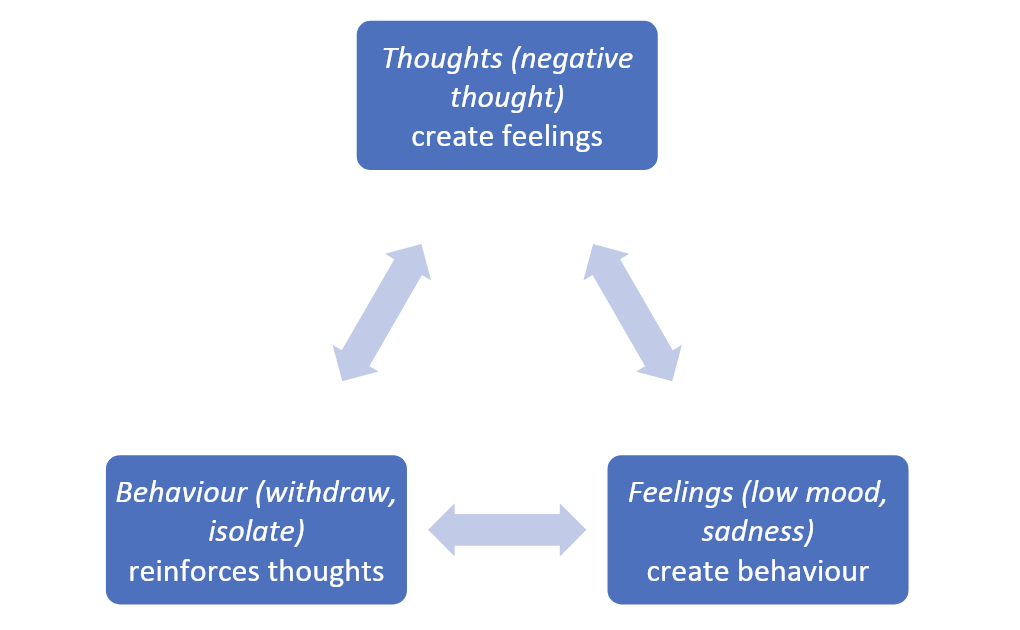
Occupational therapist Shean Cadby-Lynch explains why Cognitive Behavioural Therapy (CBT) can help your mental wellbeing

The focus of the blog today is about CBT (Cognitive Behavioural Psychotherapy) and how it might be able to help you.
I qualified as an occupational therapist is 2002 and practised in many different mental health settings over the years. In 2010, I trained to be a cognitive behavioural psychotherapist.
The two professions work rather well together and, as someone who is dual trained, I am able to use all of my skills and knowledge to work with someone in a client centred, holistic way.
Today, I will be trying to explore: What is CBT and how can it help your emotional wellbeing?
It’s such a great question because there are so many therapy options out there, from psychoanalytic therapy to counselling to Gestalt Therapy, so how do you know if CBT is for you?
Feelings and behaviours
Well firstly, do you want a therapy that would help you look at the relationship between your thoughts, feelings and behaviours, and how they interact with each other and have an effect on each other? If so, then CBT might be what you are looking for.
CBT is a talking therapy and is based on the concept that there is a relationship between our thoughts, feelings, and behaviours. You and your therapist will look at how your thoughts, beliefs and attitudes affect your feelings and how you behave, and vice versa.
It is based on the belief that how we think about situations can affect how we feel and how we then behave in these situations. For example, if you experience negative thoughts about a situation, you might then experience negative emotions such as low mood, which can then impact on our behaviour (such as withdrawing or isolating ourselves from the situation which has caused the negative thought).
This is what we call in the CBT world, a ‘vicious cycle.’ CBT therapy can support and help you to change these vicious cycles so that you can change and alter the way you think, feel and behave, so that you can overcome your difficulties, feel more positive, and improve your emotional well-being.
Low self-esteem
CBT is evidence-based therapy, which means that there’s a lot of research into how effective and helpful it is with depression and anxiety disorders, such as depression, generalised anxiety, panic, health anxiety, phobias, OCD, PTSD and low self-esteem.
When you first see a CBT therapist you will have an assessment and this is where you look at the difficulties that you’re experiencing, whether that’s symptoms of low mood, anxiety, or both, and how it is affecting your present, day-to-day life.
There is a myth that CBT does not deal with past issues and yes, most CBT sessions do focus on the ‘here and now’, as you are exploring and tackling current difficulties and exploring what is maintaining these difficulties.
But it doesn’t mean that past problems or issues are discounted or not addressed, as past experiences may be an important contributory factor in the development of the problem.
CBT treatment
CBT treatment is goal orientated and can be short-term if a problem is mild. In that case, as little as six sessions could make a big difference. Whereas more complex situations may require up to 20 sessions or more.
Sessions are reviewed on a regular basis to ensure treatment remains goal focused, client centred and collaborative.
One of the things that makes CBT different to other types of therapy is the focus on in session ‘tasks’ and ‘homework’, which are practical tasks that you and your therapist work through together in a session. The you, as the client, would practise these activities or tasks outside of the session. For example, you might keep a mood diary or a thought record.
These ‘tasks’ would be reviewed at the following session, together, and this would enable you to start to build a ‘toolbox’ of strategies for you to use, both during your period of therapy and in the future, remaining valuable long after therapy is completed.
Therapy
You would be an active participant in therapy and would want to allow yourself time to complete the in-between session tasks, to enable you to get the most out of your therapy experience.
The therapeutic relationship between the therapist and the client is really important and for me, this is one of the main contributory factors to successful therapy, as well as active engagement from the client in the treatment process.
Treatment is collaborative whereby you and the therapist work together to explore your thoughts, feelings, behaviours, triggers, and maintenance factors, to enable effective treatment planning and implementation to be carried out that is both goal orientated, client focused and holistic, putting you, the client at the heart of treatment.
I hope my first blog has helped explain CBT just a little?
Maybe you can relate to some of the difficulties I’ve mentioned today? If so, CBT might be a therapy that you want to consider. So, please do give us a call or email kate@wellbeingtherapysolutions.co.uk for a chat.
READ MORE: Blog – Do you experience the ‘Sunday Scaries’?
READ MORE: Explore more of our adult therapy sessions










